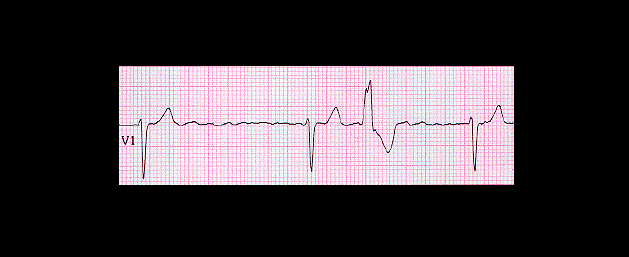
When the rhythm is atrial fibrillation or atrial flutter, the determination of whether a single wide complex beat, such as that shown here, is ventricular in origin or is supraventricular but conducted aberrantly is more difficult because there are no premature P waves and because the interval following the wide complex beat will be variable. In these situations, attention should be focused on the coupling interval of the wide complex beat and the RR interval preceding the wide complex beat. A diagnosis of aberrant conduction is favored when, as in this example, the coupling interval of the wide complex beat is short and the preceding RR interval is long. This relationship, originally described by Ashman, and referred to as the “Ashman Phenomenon” was discussed in chapter 3.
